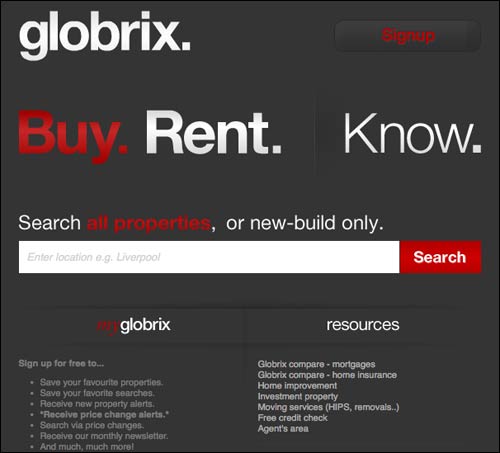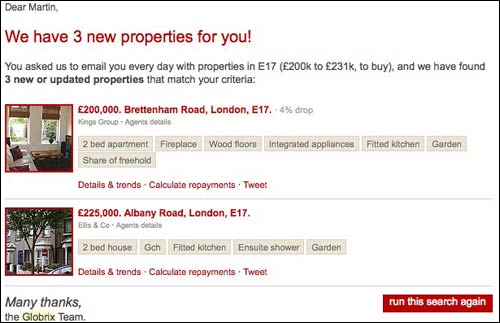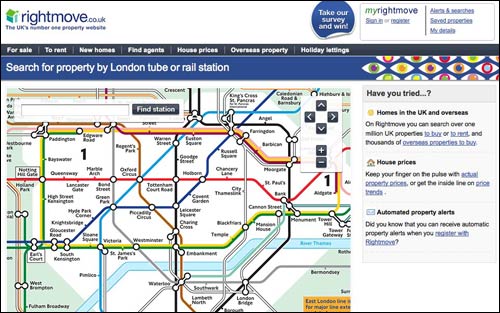The UX of moving house: Part 5 - A more native web experience
Last week I began posting a series of articles based on the notes I made about searching property websites online. I gave this as a presentation at London IA in the Pub in October 2009, where I discussed how the digital user experience of moving house was poor. However, some more 'web native' applications and interfaces are emerging, which seem to be providing a service that is superior to the websites offered by the 'traditional' local web agency.
Last week I mentioned Mapumental as being a significant improvement on delivering useful geographic information when choosing somewhere new to live. Today I want to look at two sites that seem based around delivering a complete digital experience, rather than simply putting a bricks-and-mortar operation online.
A more native web experience
Given some of the bad usability examples I've shown over the last couple of posts, in the end it was no surprise that sites that seemed set up specifically as a web presence provided a more 'web native' experience of searching for property. Globrix, for example, dispenses with the pretty pictures of happy couples moving into a new home, or the story of how the company has been a family firm since the early 1900s, and instead concentrates directly on the task at hand - buy or rent.

Globrix also used more typical web interface elements to make information easier to digest for the user. Instead of the lengthy spiel telling you that 'this bijou property requires some work, but must be seen', Globrix email alerts have 'tags' on each property describing the main features. My wife was just lucky I didn't insist on only looking at properties tagged 'art deco'.

Rightmove was another site where I had a much better user experience when searching for a house online. Take for example their ability to narrow your search down to the surroundings of a particular tube station. Their clickable, zoomable Tube map - complete with River Thames - was infinitely more usable than Ludlow Thompson's 600+ checkboxes.

It seems to me that many small estate agents appear to be in the classic 'middle-man' position that digital disintermediation is in the process of wiping out from swathes of industry sectors. If someone could put a critical mass of vendors in touch with a critical mass of buyers and their solicitors, it could make significant in-roads into the market. If I'm not physically in the location, I don't want to digitally walk from small estate agent shop window to the next shop window, peering at small pictures of properties. I want large pictures, I want maps, I want transport information and I want to be able to compare everything in a local area in one place. Delivering an online service like that would see a large amount of estate agents very much destined for the 'B'-Ark.
Next...
I'll be continuing this series with a look at some of the online dealings I had with local councils and service providers in the course of our house move.